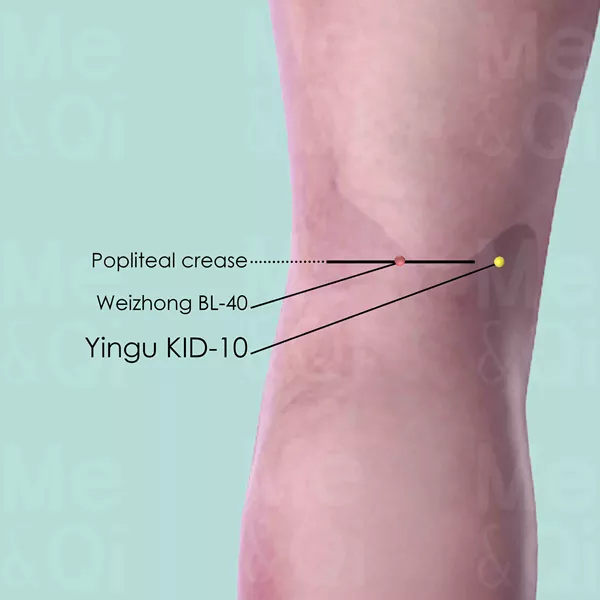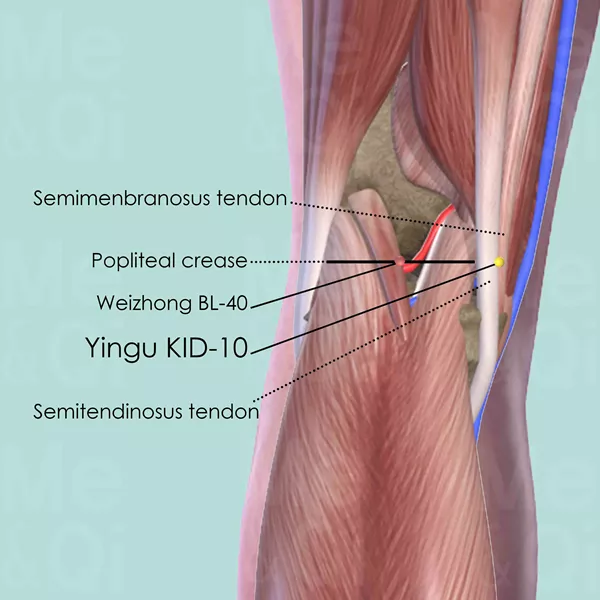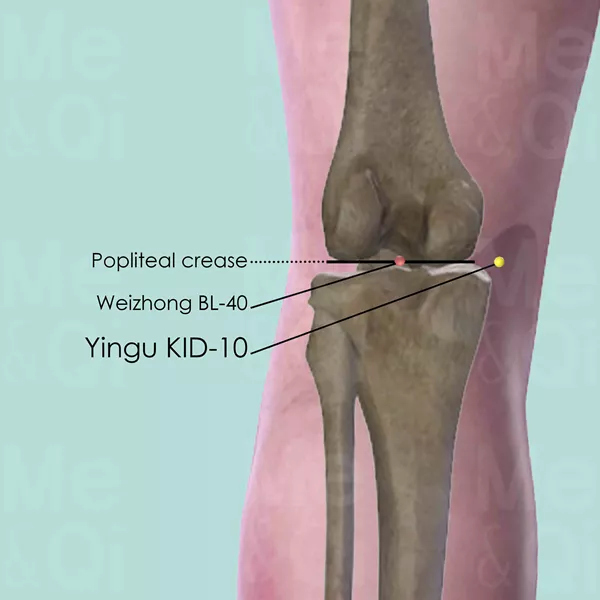Yingu KID-10
Chinese: 阴谷
Pinyin: Yīn Gǔ
Location
On the medial side of the popliteal fossa, level with Weizhong BL-40, between the tendons of semitendinosus and semimenbranosus muscle when the knee is flexed.
How to locate
Flex the knee at less than 90° and press the heel against the floor to reveal the tendons of the semimembranosus and semitendinosus muscles in the popliteal crease.
Locate Yingu KID-10 in a small gap between the more prominent tendon of the semitendinosus muscle and the less obvious tendon of the semimembranosus muscle.
Main actions
- Resolves Dampness from the Lower Burner
- Nourishes Kidney Yin
Needling
Needle 1–1.5 cun vertically from a dorsomedial aspect towards the tibial tuberosity.
Avoid puncturing the tendon.
Commentary for Yingu KID-10
Yingu KID-10 has two major functions.
First of all, it resolves Dampness from the Lower Burner, like the other two Sea-He points around the knee: Yinlingquan SP-9 and Ququan LIV-8. Typical symptoms are urinary or abdominal disorders such as hypogastric pain and fullness, abdominal distension and pain, difficult urination, turbid urine as well as painful urination.
The point is also often used to nourish Kidney Yin. Typical manifestations include backache, tinnitus, deafness, night sweating, dark urine and dry throat.
Zhaohai KI-6 and Zhubin KID-9 also deal with Kidney Yin Deficiency. However, KID-6 is more focused on moistening the Dryness while KID-9 is more on treating mental emotional issues such as anxiety and insomnia. All above symptoms are the consequences of Kidney Yin Deficiency.



